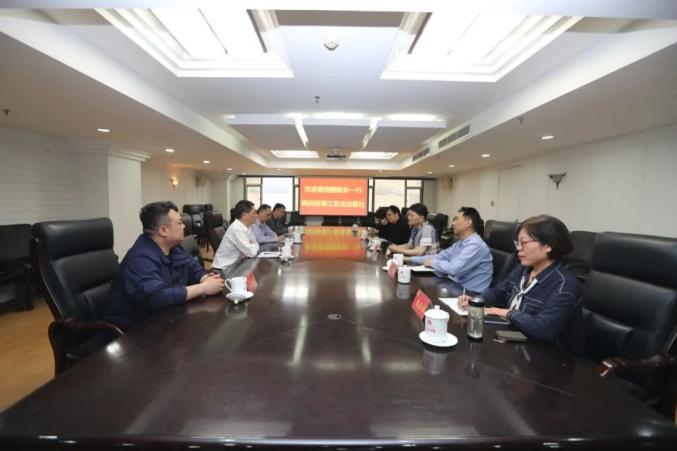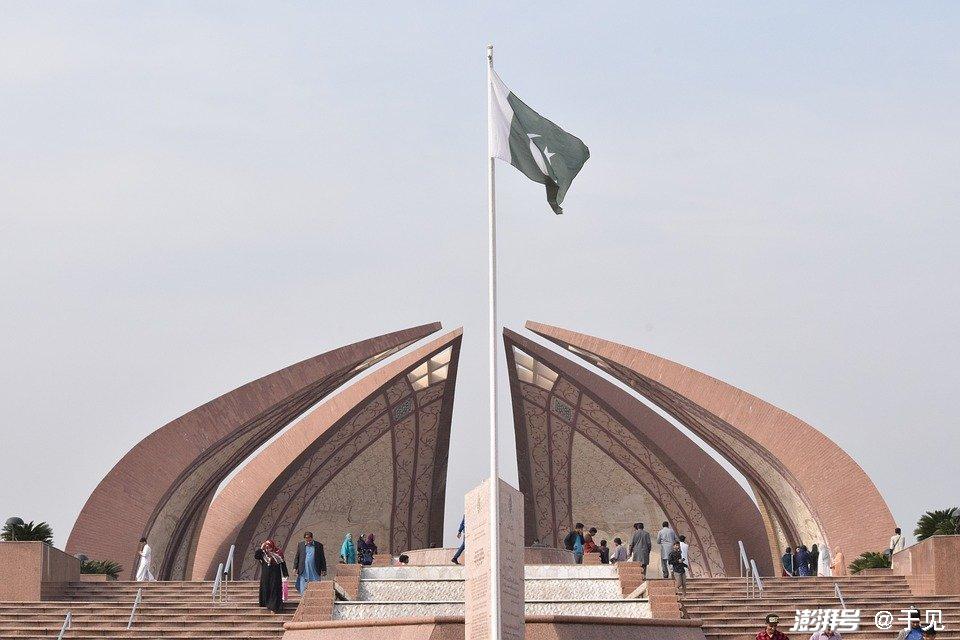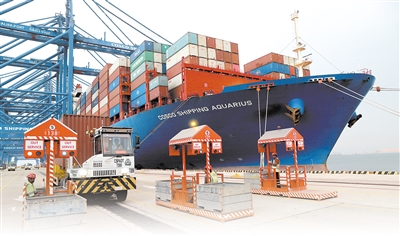Second Time|90 Years Later, Why Is The "Hu Huanyong Line" Still Not Outdated?
Second Time|90 Years Later, Why Is The "Hu Huanyong Line" Still Not Outdated?
People's Political Consultative Conference Daily praised 96 "At present, population development is still on the southeast side of the 'Hu Huanyong Line', and it is urgent to improve the regional coordinated development strategy." During the 12th meeting of the 14th Standing Committee of the National Committee of the Chinese People's Political Consultative Conference, Gao Jin, a member of the Standing Committee of the National Committee of the Chinese People's Political Consultative Conference, said that under the new development pattern,
People's Political Consultative Conference Daily
, like 96
"At present, population development is still on the southeast side of the 'Hu Huanyong Line', and it is urgent to improve the regional coordinated development strategy." During the 12th meeting of the 14th Standing Committee of the National Committee of the Chinese People's Political Consultative Conference, Gao Jin, a member of the Standing Committee of the National Committee of the Chinese People's Political Consultative Conference, said that under the new development pattern, how to solve the problem of imbalance and inadequate regional development highlighted by the "Hu Huanyong Line" is an effective measure to improve the people's livelihood environment, narrow the gap between the east and the west, and promote common prosperity.
The "Hu Huanyong Line" mentioned by Gao Jin aroused heated discussions among the members at the meeting.
This year coincides with the 90th anniversary of the proposal of the "Hu Huanyong Line". 90 years have passed, why is this line still not outdated? What kind of line is this? What are the implications for promoting my country's regional coordinated development?
A heavy line, through the north and south, and is dense
Anyone who has studied geography knows that China has a population density dividing line - the "Heihe-Tengchong Line".

This line is located on the Heilongjiang River in the northeast and on the other end is connected to Tengchong, Yunnan on the southwest border. This line was first proposed by the famous geographer and geographic educator Hu Huanyong, so it is also known as the "Hu Huanyong Line".
The east side of this line is flat, mainly hills and plains, with abundant precipitation. To this day, about 90% of China's population is still distributed. The urbanization level of most provinces, autonomous regions and municipalities is higher than the national average. The seven major urban agglomerations in China are all on this side; the west side is rugged, mainly high mountains and plateaus, with vast land and sparse population, less precipitation, and relatively backward economic development. The urbanization level of most provinces, autonomous regions and municipalities is lower than the national average.
In 1935, China was in a difficult period of internal and external troubles, and the increasingly sharp contradiction between supply and demand between population and land became a key issue that needs to be resolved urgently. The young Hu Huanyong shouldered the mission entrusted by the times and worked hard to draw China's first population density map. Based on this, he boldly proposed a dividing line that can identify the population differences between China's eastern and western regions - from Aihui, Heilongjiang (now Heihe City) to Tengchong, Yunnan, to draw a straight line with a roughly 45 degrees incline. This is the "Hu Huanyong Line" that shocked the world, and was later praised as "China's century-long geographical discovery."

In the 1980s, Hu Huanyong was in the information room.
How amazing is this line? Zhang Lianqi, member of the Standing Committee of the National Committee of the Chinese People's Political Consultative Conference and vice president of the Chinese Taxation Society, commented: "The Hu Huanyong Line, as the core dividing line of China's population geography, not only reveals the 'east and west' pattern of population distribution, but also reflects the differences in natural resource endowment, economic development level, cultural ecology and human settlement environment." Min Qingwen, member of the National Committee of the Chinese People's Political Consultative Conference and researcher at the Institute of Geographical Sciences and Resources of the Chinese Academy of Sciences, also called it "a valuable ideological heritage in the field of Chinese human geography."
90 years have passed, and the "Hu Huanyong Line" has not yet been broken. Zhou Lan, a member of the National Committee of the Chinese People's Political Consultative Conference and vice chairman of the Jiangsu Provincial Committee of the Chinese People's Political Consultative Conference, said, "The data of the seventh national population census in 2020 showed that the population share in the west of the 'Hu Huanyong Line' rose to 6.5%, and the population share in the east of the region fell to 93.5%. But this data also reflects that the development differences between the two sides of the 'Hu Huanyong Line' are still huge."
In recent years, the "Hu Huanyong Line" has become increasingly famous due to its stability. "This stability is essentially an objective reflection of the spatial differences between natural geography and ecological environment." Min Qingwen pointed out that this line reveals the deep logic of the Chinese people-land relationship with the sharp contrast of "43.18% of the land in the southeast gathers more than 90% of the population, and 56.82% of the land in the northwest carries less than 10% of the population."
The significance of the "Hu Huanyong Line" is far more than demography and population geography. As Min Qingwen said: "The "Hu Huanyong Line" is not only an important perspective for understanding the basic national conditions of my country's population distribution and resource and environmental carrying capacity, but also an important boundary that reflects regional economic and social development, regional cultural identity and ethnic settlement differences, and provides a core framework for studying China's regional economic differences, ecological protection and ethnic integration."
The vast nine provinces have been planned to coordinate through ancient and modern times
Faced with the problem of regional development inconsistency reflected by the "Hu Huanyong Line", the Party Central Committee has always attached great importance to it. From the western development to the regional coordinated development strategy, from new urbanization to the new development pattern of "dual circulation", a series of policy measures aim to promote common prosperity.
"At present, at the critical stage of global governance facing complex challenges, deepening the Belt and Road Initiative, and steady advancement of 'Chinese-style modernization', it is necessary to rethink and plan the issue of regional coordinated development on both sides of the 'Hu Huanyong Line' under the background of ecological civilization construction and industrialization and urbanization." Zhou Lan suggested that promoting the coordinated development of the two sides of the 'Hu Huanyong Line' will be included as an important consideration in the 15th Five-Year Plan.
Zhou Lan believes that clarifying the coordinated development goal of regional coordinated development on both sides of the "Hu Huanyong Line" lies in the balance of "quality", rather than the distribution of "quantity". First, we must objectively understand China's regional development gap, respect the laws of objective development, and do not pursue structural changes in population size and economic distribution in the areas on both sides of the "Hu Huanyong Line", but are committed to promoting the relative balance of the development level of the two sides, urban and rural shared welfare, and narrowing the gap. Second, we have recently sought key breakthroughs and point-like focus for the coordinated development of the two sides of the "Hu Huanyong Line". The development of the central and western regions will be coordinated and planned in the joint construction of the "Belt and Road" and the domestic and international dual circulation, and differentiated industrial development, infrastructure construction, space and land use policies, and support key regional central cities and node cities in the areas west of the "Hu Huanyong Line", forming a new growth pole to open up to the outside world that drives regional economic growth. The third is to fully consider the sustainability of development. Adhere to the matching of the development of the central and western regions with the regional ecological environment carrying capacity and the improvement of the adaptability of the living environment.
"Regional coordinated development does not mean the equalization of regional development, but emphasizes building an efficient and coordinated spatial pattern by respecting objective laws and leveraging comparative advantages." Min Qingwen suggested that by improving infrastructure construction and increasing fiscal transfer payments, the free circulation of resource elements in the east and west will be optimized to ensure equal enjoyment of regional development differences and public services; optimize the layout of major productivity, introduce supporting policies for industrial transfer in the western region, deepen scientific and technological innovation cooperation between the western region and the eastern and central regions, and shift from counterpart assistance to industrial cooperation; at the same time, use emerging technologies such as big data and artificial intelligence to support the development of innovative industries in the western region, and promote the coordinated economic and social development between the southeast and the northwest half of the region to a new level.
The proposal of the "Beautiful China's Middle Ridge Belt" provides new ideas for the breakthrough of the "Hu Huanyong Line". This strip-shaped area with the "Hu Huanyong Line" as the axis and extends 100 to 200 kilometers to both sides not only covers rich natural and cultural resources, but also carries the strategic mission of promoting balanced development between the east and west.
Zhang Lianqi suggested that infrastructure construction should be linked with opening up to build a "Beautiful China's Middle Ridge Belt", and build a "Heihe-Tengchong Development Axis" along the "Hu Huanyong Line", connecting the "China-Mongolia-Russia Economic Corridor" with the "Bangladesh-China India-Myanmar Economic Corridor", and forming a Northeast Asia-Southeast Asia trade channel. Dynamic solutions are made in variables such as climate change and the "Belt and Road" initiative, so that this "geographic national conditions line" can be transformed into a "coordinated development line".
"90 years have passed, and the 'Hu Huanyong Line' is not only not outdated, but it still shines in the sky of history." Zhou Lan said that whether it is from the perspective of national conditions, urbanization enlightenment, border security, or from the perspective of regional coordinated development and sustainable development, this line has important practical significance and requires generations of our people to continue to work to ultimately achieve coordinated regional development and common prosperity.
Science Popularization Class | What line is the "Hu Huanyong Line"?





